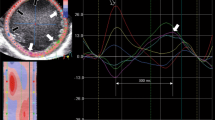Abstract
Sinus node dysfunction with concomitant junctional rhythm (JR) is frequently observed among Fontan patients and has been recognized as a contributor to heart failure. The impact and management of JR is unclear. A survey was mailed to all members of the Pediatric and Congenital Electrophysiology society (PACES) and members were asked to forward the questionnaire to their non-electrophysiology colleagues. Responses were received from 154 physicians (88 electrophysiologists (EP’s) and 66 non-EP’s (46 pediatric cardiologists and 20 adult congenital cardiologists). There were few differences in the response between EP’s and non-EP’s. Overall, 57% recommended an annual ambulatory ECG (AECG). A significant majority (80%) opted to continue to follow patients with significant periods of JR on AECG as long as the patients were asymptomatic, and showed no echocardiographic signs of cardiac decompensation. However, 84% would place a pacemaker in a patient with JR who was having open chest surgery for other reasons. Finally, pacemaker placement would be performed by 91% if a patient with JR showed signs of heart failure. Most congenital cardiologists would not recommend pacemaker placement in asymptomatic Fontan patients with JR. Further studies are needed on the Fontan population to determine the impact of SND and JR on longer term outcomes and to determine the role and optimal timing of pacemaker placement in these patients.
Similar content being viewed by others
References
Rychik J, Atz A, Celermajer D, Deal B, Gatzoulis M, Gewillig M et al (2019) Evaluation and management of the child and adult with fontan circulation: a scientific statement from the American Heart Association. Circulation 140(6):234–284
Carins T, Shi W, Iyengar A, Nisbet A, Forsdick V, Zannino D et al (2016) Long-term outcomes after first-onset arrhythmia in Fontan physiology. J Thorac Cardiovasc Surg 152:1355–1363
Stephenson EA, Lu M, Berul CI, Etheridge SP, Idriss SF, Margossian R, Reed JH, Prakash A, Sleeper LA, Vetter VL, Blaufox AD (2010) Arrhythmias in a contemporary Fontan cohort: prevalence and clinical associations in a multi-center cross-sectional study. J Am Coll Cardiol 56:890–896
Blaufox AD, Sleeper LA, Bradley DJ et al (2008) Functional status, heart rate and rhythm abnormalities in 521 Fontan patients 6 to 18 years of age. J Thorac Cardiovasc Surg 136:100–107
Alnoor M, Burch G, Armsby L, Batra A, Balaji S (2021) Hemodynamic impact of atrial pacing in patients with Fontan physiology and junctional rhythm: a cardiac catheterization study. Pediatr Cardiol. https://doi.org/10.1007/s00246-021-02747-2
Hasselman T, Schneider D, Madan N, Jacobs M (2005) Reversal of fenestration flow during ventricular systole in Fontan patients in junctional or ventricular paced rhythm. Pediatr Cardiol 36:638–641
Cohen MI, Rhodes LA, Wernovsky G et al (2001) Atrial pacing: an alternative treatment for protein-losing enteropathy after the Fontan operation. Cardiovasc Surg 121:582–583
Moore JP, Shannon KM (2014) Transpulmonary atrial pacing: an approach to transvenous pacemaker implantation after extracardiac conduit Fontan surgery. J Cardiovasc Electrophysiol 25:1028–1031
Shah AH, Khadem A, Tam J, Ducas R (2020) Permanent pacing in a patient with Fontan circulation: use all you have at your discretion. Heart Lung Circ 29:e17–e18
Barber BJ, Burch GH, Tripple D, Balaji S (2004) Resolution of plastic bronchitis with atrial pacing in a patient with Fontan physiology. Pediatr Cardiol 25:73–76
Saiki H, Kawada K, Kuwata S, Takanashi M, Fukunishi T, Miyaji K, Senzaki H (2021) Echocardiogram unmasked hemodynamic advantage of atrial pacing in securing ventricular preload in a Fontan patient with junctional rhythm: clinical implications to preserve supraventricular rhythm. Int Heart J 62:448–452
Chubb H, Bulic A, Mah D et al (2022) Impact and modifiers of ventricular pacing in patients with single ventricle circulation. J Am Coll Cardiol 80:902–914
Poh CL, Celermajer DS, Grigg LE, Kalman JM, McGuire MA, Gentles TL, Radford DJ, Bullock A, Disney PJS, Winlaw D, du Plessis K, d’Udekem Y (2019) Pacemakers are associated with a higher risk of late death and transplantation in the Fontan population. Int J Cardiol 282:33–37
Shah MJ, Silka MJ, Avari Silva JH et al (2021) 2021 PACES expert consensus statement on the indications and management of cardiovascular implantable electronic devices in pediatric patients. Heart Rhythm 18:1888–1924
Khairy P, Van Hare GF, Balaji S et al (2014) PACES/HRS expert consensus statement on the recognition and management of arrhythmias in adult congenital heart disease. Heart Rhythm 11:e102–e165
Diller G-P, Dimopoulos K, Okonko D, Li W, Babu-Narayan SV, Broberg CS, Johansson B, Bouzas B, Mullen MJ, Poole-Wilson PA, Francis DP, Gatzoulis MA (2005) Exercise intolerance in adult congenital heart disease: comparative severity, correlates, and prognostic implication. Circulation 112:828–835
Acknowledgements
We thank Ms. Hannah Holiman for secretarial help with the study.
Author information
Authors and Affiliations
Contributions
SB: Conceived the study, performed the study, wrote the manuscript. PE: Performed the statistics, critically reviewed the results, and the manuscript, and edited the manuscript. AB: Helped design the study, critically reviewed the results, and the manuscript, and edited the manuscript. JM: Helped design the study, critically reviewed the results, and the manuscript, and edited the manuscript.
Corresponding author
Ethics declarations
Conflict of interest
Seshadri Balaji has received consulting fees from Milestone Pharmaceuticals and Janssen Pharmaceuticals.
Additional information
Publisher's Note
Springer Nature remains neutral with regard to jurisdictional claims in published maps and institutional affiliations.
Supplementary Information
Below is the link to the electronic supplementary material.
Rights and permissions
Springer Nature or its licensor (e.g. a society or other partner) holds exclusive rights to this article under a publishing agreement with the author(s) or other rightsholder(s); author self-archiving of the accepted manuscript version of this article is solely governed by the terms of such publishing agreement and applicable law.
About this article
Cite this article
Balaji, S., Evers, P.D., Batra, A.S. et al. Management of Junctional Rhythm in Patients After the Fontan Operation: A Multicenter Congenital Cardiology Survey. Pediatr Cardiol 45, 63–67 (2024). https://doi.org/10.1007/s00246-023-03296-6
Received:
Accepted:
Published:
Issue Date:
DOI: https://doi.org/10.1007/s00246-023-03296-6




